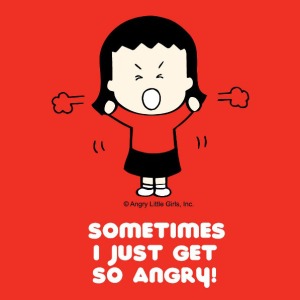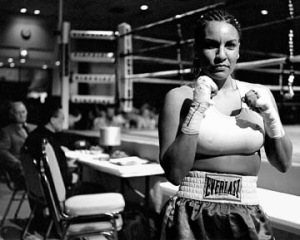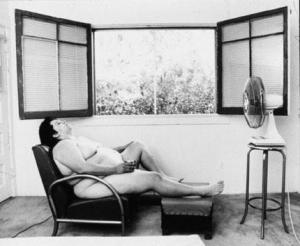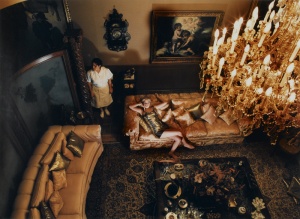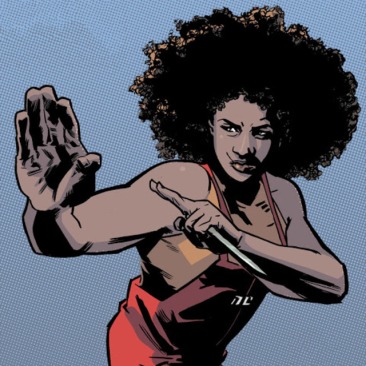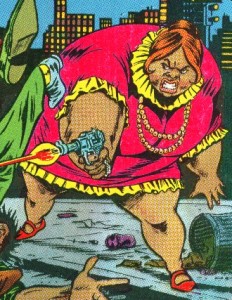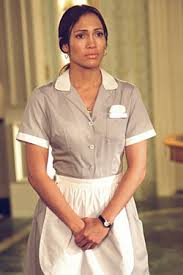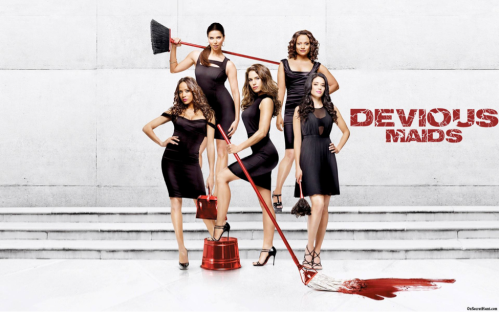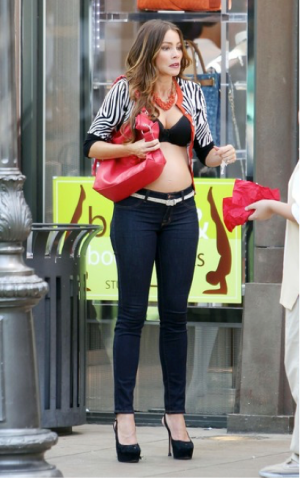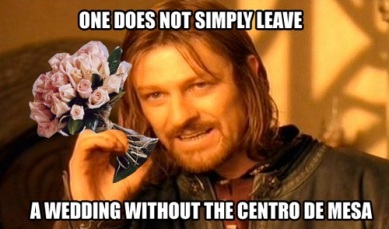“CHLS 490 Women of Color: Art Literature and Culture”
Antes Muerta que Cencilla….
{Kiss}
Why pink…?
How is it that femininity in our current social media has portrayed women as egocentric, conceded, sexy, hot, oh and don’t get me started on the term “exotic” …what are we toucans or something? There are many women in social media today that are not fitting into these negative stereotypes but their roles are usually not the main characters in soap operas. More movies and television shows are beginning to portray women as more than sex objects or a pretty face but as independent business owners, social movement leaders and even super heroes but are they really a good representation of the women in this century? I am not talking about Kim Kardashian or Amber Rose and if you don’t know who these women are, then good because they are far from reality. Soap operas are a perfect example how women of color have been portrayed for centuries as egocentric, sex objects, and not intellectual. This is now changing and women are being represented as business owners, social movement leaders and crime fighters.
“Hasta El Fin Del Mundo”
The first soap opera we will be analyzing is “Hasta El Fin Del Mundo.” It is a Spanish based soap opera that is televised by the Univision television network. Women in this soap opera are a perfect example of how women are portrayed through this form of media. In this novela the main characters, as shown in the picture, are good looking, fit, fair skinned and the woman is platinum blonde. This novela is broadcasted in a popular network that is one of the largest Spanish based networks. The Univision website has demographic facts and a tab specifically targeted in explaining how and why they target Hispanic people. The tab on the website it “Hispanic Marketing” how more obvious can it be? But what happens when young women see what an ideal women looks or acts like? what happens when the non Spanish speaking population watches these dramas? Is this how stereotypes start? YES! The next time you watch a novela or happen to see a commercial advertising a Spanish novela pay close attention to the main characters. One of the main negative stereotypes that are created by these novels is that Hispanic or Latin women are egocentric. This begins to fuel the idea that if you meet a Latin women that has features from the novelas then she must be conceded and dramatic. Take this video as an example, how more dramatic can this be?
It is evident in the how women in Spanish soap operas are used as sexual objects and most of the rich main characters are not intellectual. An example is in the novel “Al Diablo con los Guapos” although this novela was not produced in this past year it is a recent novela in where one of the main characters, the daughter of the rich successful man, is portrayed as a spoiled, arrogant, and not a very smart young adult. This continuous perception of Latin women as egocentric, sexual objects, and not very intellectual has become and on going phenomenon in Spanish Soap Operas. Is it not confusing that the own creator of these novelas are Latin people as well. Why would you intentionally portray your own ethnicity as something that can be negative? Many men and women are content that Latin women are portrayed as sexual but to what extent is this acceptable? Is this not demeaning to women?
“The Bold and the Beautiful”
Wait …where is she..? oh there she is ….(far right, wearing blue)
In “The Bold and the Beautiful,” a soap opera that has ben on air for years, one of the main characters, Maya played by Carla Mosley was discovered as a transgender women in the drama. It became a huge deal because it became the fist soap opera that has a transgender main character. This became a huge controversy and was even reported in the news.
(Watch the news report by clicking on CBS Icon)
ANGRY Little Asian girl by Lea Lee
(Click on image for website)
In our recent reading from CHLS 490 we are introduced to a well liked character named Turtle in a novel by Helena Maria Viramontes titled Their Dogs Came With Them. In this novel we are introduced to a character that is female by birth but male throughout the novel. We are able to understand a better perspective of this characters life. Turtle is a young women that struggles to feel accepted and wanted. She travels living on the streets of Los Angeles. Turtle is seen as a transformation of acceptance and respect through this novel. It has become a phenomenon to have women as main characters both in novels as well as television programs that do not fit the “classic” woman. Currently in our social media we are able to see empowering women that are represented with different characteristics and are accepted by the mass population. Through literature women of Native American, African American, Asian American and Latin ethnicities have represent their own experiences and those of others by telling their stories. Story telling has served as a tool of expressing the inner thoughts of many women of color. The visual arts, film and performances have began to portray women as human and not only objects. There are many representations of women and I would not believe that their ever will be only one form of representing a woman. In the documentary “Angry Little Asian Girl” by Lea Lee we are given an example of how women can use visual arts to express emotional feelings. There are many ways that can be used to express our desire to change these stereotypes that have been accumulating throughout generations. Its time that one by one we begin to change how women are represented. We are all unique in our own ways and deserve each of our uniqueness to be equality represented.
In Conclusion ….
There are a few novelas that don’t follow these three stereotypes but the representation of women of color that do not fit these stereotypes is rare. Now we have more women who are super heroins or crime fighters. Colombiana, Guardian of the Galaxy, Stalked and Nakita are few movies and television shows that have women of color as main characters that are strong, intellectual and beautiful. After reflecting on the content of our class CHLS 490 I have a better understanding of how women of color are represented.We are now in 2015 and it is time we begin to demand our proper representation. We are not objects, we are not a specific color, a specific height, a specific width, etc. we all are different and different should not be looked at as something unacceptable. We are women of color and life is color.
Citation
- Images:
“Esta Noche No Saldre…” Meme, Anonymous
“The Bold and The Beautiful”
http://pixshark.com/the-bold-and-the-beautiful-2015.htm
“Hasta El Fin Del Mundo”
http://www.laopinion.com/marjorie-de-sousa-david-zepeda-musical-hasta-el-fin-del-mundo-cantare
Lea Lee, “Angry Little Asian Girl”
https://marciokenobi.wordpress.com/2012/04/01/angry-little-girls/ - Videos/Website:
Youtube.com
Angry Little Asian Girl
http://www.angrylittleasiangirl.com/
“The Bold and the Beautiful” soap opera adds transgender plot twist / “Entertainment Tonight” youtube.com
“These Mexican soap operas…” youtube.com
- Readings: Viramontes Mari Helena, “Their Dogs Came With Them”
- Articles:
Univision Hispanic Marketing
http://corporate.univision.com/hispanic-marketing/marketing-services/research-consumer-insights/

Afro-Cuban actress Gina Torres
It seems that Spanish language networks, such as Telemundo and Univision, do not shy away from European beauty standards. There is no shortage of fair skinned, blonde haired, blue eyed leading ladies on telenovelas. These women are hardly representative of the chiefly brown skinned, mestiza Latin American communities. Fortunately, the representation of Latinas on television has been developing. On major broadcasting networks, over the years we have seen Latinas break out of the shadows of their white counterparts with characters such as Sofia Vergara’s Gloria on Modern Family and Eva Longoria’s Gabrielle on Desperate Housewives. Thankfully, more recently we have seen an influx of Latinas taking center stage.
Late last year we saw ABC debuted Cristela, a sitcom created by and starring Mexican American writer, Cristela Alonzo. In the same week The CW debuted Jane the Virgin, a show centered on a young, devout Catholic Latina who has to manage her life, work, and school. In 2013 years ago, Lifetime presented Devious Maids, starring and produced by numerous well known Latina actresses. Of course we all remember Ugly Betty, which appeared on the air almost a decade ago. In 2000, Nickelodeon came out with Dora the Explorer, giving representation to millions of young Latina girls. It is not very often that we see shows putting Brown women in the spotlight. As the advocacy for Latina representation grows and the people’s prayers are answered, we should stop and look critically at the faces chosen to embody our culture. While dark skin, eyes, and hair is far better representation than white only telenovelas, does anyone ever stop to think, “What is missing?”
We have come so far, but the everlasting effects of colonialism live on. The 16th Century brought the Spanish to the Americas, beginning the age of the mestizas we see today. As we all know, the Europeans did not travel across the Atlantic alone. Millions of African people were brought across the Americas, subsequently leaving today a Latin America with nearly 25% of the population being of African descent. [2] Today in the United States 2.5% of the Latino population self-identifies as Black. [1] While Latinos take on all shape, sizes, and colors, why is it that we see so few of Afro-Latinos on screen? In Latina Magazine, Miriam Muley was quoted saying, “There’s an undercurrent of racism, there’s no question about that. There is definitely a ranking that occurs in our community based on skin tone, as well as our hair type and our facial
features.”[4]
The lack of portrayal of Afro-Latinas on television is a direct result of racism and colonialism. It is no secret that the Europeans came to the Americas with African slaves. There is no denying that African ancestry runs deep in Latin American countries, in various amounts. Countries such as Brazil, Cuba and the Dominican Republic have majority Black populations. [2] No matter how small or large the group, they are still there. Since these groups are just as prevalent as white and mestizo people, why is it that we do not see them?
There are hardly any negative portrayals of these women because there are nearly no portrayals of them at all. Although these women exist and are successful in Hollywood, rarely does the entertainment industry dive into the complex lives of Afro-Latin Americans living in the United States. In fact, Afro-Latina actresses are often pigeonholed into playing the parts of Black Americans. Cuban actress Gina Torres gave an interview with Latina Magazine and spoke on Afro-Latinos in Hollywood not getting recognition stating, “There are so many of us out there. And part of it is, we’re undercover. They don’t know, and if we stood and said, ‘that’s it I’m not going do any roles that are not Latina,’ we would not work.” [5]
Latino people cover a whole spectrum of colors, yet one end is prided and privileged and the other faces undue discrimination and racism. Often times Afro-Latinos end up on television only as Black Americans, erasing their culture and falling into a category often women fetishized for their subtly African and more European physical features, such as fairer skin, finer features, and straighter hair. The simple fact is Latin America is not monolithic. It consists of millions of people from many ethnic and racial backgrounds, but in many instances it is injudiciously anit-Black. White beauty standards highly influence Latino communities, as does a bout of anti-Blackness that is swept under the rug and denied vehemently.
Recently, there have been few positive portrayals of Afro-Latinas on television and in film. From 2001 to 2009, actress Judy Reyes portrayed Carla Espinosa on the sitcom Scrubs, as a Dominican nurse. In this rare instance, we saw a character whose background was not erased, and in fact acknowledged the duality of being both Latina and Black. In 2011, Zoe Saldana starred in the film Colombiana. Although her character did not give insight on the complexity of Afro-Latino culture, we saw an actress of obvious African descent portraying a Latina, which social condition had made into a nearly infeasible idea. The 2013 Netflix series Orange is the New Black has a wide range of Latina actresses, varying in all different colors. Positive portrayals of Afro-Latinas are far and few between. While it is incredible to see so many Brown faces on television, it is also very harmful when all of those faces are shades lighter than beige. Representation matters.
CHLS 490 Sp15 Complicating Narratives: 20th and 21st Century Latina Photography
The visual arts has for centuries predominantly been dominated by Western white males. These men (artists, art historians, collectors, curators, and critics), for the longest time, have dictated what is worthy of representation and established aesthetic standards of beauty. In the arts, the white female nude has remained the romanticize and idealize form– the pinnacle of beauty. She is constantly the inspiration and subject of paintings and photographs. It wasn’t until the 60s and onwards, due to the civil rights movements and feminism, that female artists, including women artists of color, began to have a presence in the arts. These artists began to question these stereotypical representations of beauty and, also, began to question the way they were being represented in the arts. It was standard practice in arts for “the other” to be depicted as either exotic, a caretaker, or simply not depicted at all. It was exactly these limited and often negative representations of the “Other” that women artists of color began to question and reject through their own art.
As follows I will explore how three different Latina artists have been questioning and complicating, through photography, stereotypical and/or lack of visual representations of “The Other.”
The first artist challenging stereotypical representations of women of color is Delilah Montaya. Montaya is a Chicana photographer born in Texas and currently residing in New Mexico. In 2006 she produced a photographic series, which she entitled Women Boxers: The New Warriors. As the title indicates, the series consists of images of professional female boxers both in the ring and outside. Many of the subjects depicted in this series are women of color, like the woman represented in the image above. This series captures women in a very atypical setting—the boxing ring. Boxing, a contact sport, is normally seen as a male designated sport. By portraying female boxers, especially women of color boxers, Montaya is not only producing some breathtaking black and white action photographs but, more importantly, is also simultaneously breaking down stereotypes of femininity and beauty in the fine arts.
The figures at the center of Montaya photographs are often women of color. By having women of color as the focal point, Montaya is stating they are worth representing. Montaya portrays her subjects as active agents— in control of their careers and bodies. Their stances, like the image above, express power and assurance in their own skills and selves. Some of the women are mothers and are at times depicted with their children but such images become part of a larger narrative that Montaya has constructed, rather than focal points.
Ultimately what these photographs do is offer viewers more complex representations of women of color; not as passive “others” in the corner of a composition but as central figures that are active mothers, providers, professional athletes, and forces to be reckon with. [1]
Another artist that is also questioning and breaking down stereotypical representations in the fine arts is Laura Aguilar. Aguilar is primarily self-taught Lesbian Latina artist from California. Her works, which she began in the 80s, consist of primarily self-portraits or portraits of extended family and/or friends naked in urban and natural landscapes. Aguilar’s photographs are powerful because they give voice and visibility to a very marginalized group: queer, brown, larger size, women. Her images redefine beauty and femininity not only in the fine arts but also in society. The image above is a self-portrait of Aguilar. In the photograph she is completely naked and sitting very relaxed on a chair that is located in her friend’s or possibly partner’s room, Sandy. The windows are wide open and, by the posture of her body, she doesn’t appear to care if someone catches a glimpse of her through the window. This image is a visual representation of person that is self-accepting. Her images, like the one above, act to empower not only herself but also individuals in a similar marginalized position that have never previously seen themselves represented in any medium, especially the arts.[2]
The last artist that I’ll be focusing on is Daniela Rossell. Rossell is a young Mexican photographer that is best known for her highly provocative series, Ricas y Famosas (Rich and Famous). This photo series was produced from 1992 to 2002. The series was composed of images of some of Mexico’s most wealthy and elusive individuals in their lavish homes. The subjects of her images were made up of mostly young, wealthy, light skinned women, often posing in sexualized positions, and engulfed by their extravagant possessions. The series culminated in 2002 with the publication of book. To the surprise of the artist and the subjects that composed the series, after the books release a massive scandal over the series erupted in Mexico. Daniela was accused of upholding a specific lifestyle that could only be accessed by small percent of Mexico’s population. Personally, I read her series as social documentation and social commentary on the socio-political and economic structures that make up Mexico but this is besides the point.[3]
At the beginning of this assignment I was a bit hesitant to including Rossell’s images due to the negative reaction they often seem to produce. The reason I opted to include her images as examples of positive representations of women of color is because I believe it is important to complicate narratives– in this case, I wanted to expand the idea of what constitutes as women of color. In the image above, Rossell captures a wealthy light skinned Mexican woman in her natural habitat– her lavish home. Through this image, and in general her entire series, Rossell complicates traditional representations of “the Other” in the visual arts. The women in Rossell’s images are not exotic, poor, dark-skinned indigenous caretakers that are stuck in the past. The subjects of her images are light-skinned, modern, and wealthy women that have their own personal caretakers. I won’t deny that images are problematic for various reasons but what I ultimately wanted to do is demonstrate how her images questioned and expanded representations of women of color in the visual arts.
Women of color come in various shades, economic positions, sexual orientations etc. I think it is important to acknowledges and make visible all these differences even amongst ourselves. The artists I have included are great examples of women artists of color who are not only questioning representational practices in the fine arts but are also, more importantly, giving a voice and visibility to groups that tend to not be represented or are represented in very stereotypical ways. Through their images they empower and hopefully change how people think and treat women of color.
[1] http://www.delilahmontoya.com/ArtistStatement.html#Women
[2] https://www.cla.purdue.edu/waaw/Corinne/Aguilar.htm
[3] http://broadstrokes.org/2011/01/20/artist-spotlight-daniela-rossell-captures-the-rich-and-famous/
Women of Color in Comics: The Positive Transition and Representation in Media
Women of Color have slowly come into the spotlight through tv shows and movies, and are aspiring to be in many different types of media as well. In our society today we are slowing coming into what I call the “comic age” where comic books and superheroes are once again rising in popularity. In the past, comics mostly focused mostly on men until the appearance of a feminine heroine came into the comic industry in the form of the powerful amazon Wonder Woman. From then on comics continued to relish in new female characters, and now in modern society a new aspect has been introduced to not only women, but women of color. Many comics such as Bitch Planet, Silk, and Young Avengers have embraced at least one or many women of color in their comics, and have depicted them in a way that represents the realistic side of women of color.
One of the most recent comic books to be released by the comic company Image Comics, is one filled with realistic and  powerful female characters that bring voice to those women who are usually not represented in comic books. Not only does this comic bring about powerful women, but is written by a woman as well. The story centers around a world where society punishes women for not complying with how a normal woman should behave. The women who don’t comply are sent to a “auxiliary compliance outpost” or it’s better known name of “Bitch Planet”. They are literally sent to another planet, while the rest who are compliant stay on earth. One of the first main characters that is introduced in the series, Penny Rolle, is sent to “Bitch Planet” for being non-compliant. In her backstory in the third issue of the series she was shown to have had a happy life with her mother with their bakery business, till one day she is taken away from her mother because her mother was considered “dangerous” and “delusional” by the government. The government in this series are “the fathers” and make up mostly white men. The character of Penny Rolle represents a very positive portrayal of women of color because of her fight against those who oppress her. In the series, intersectionality is occurring especially with many women at Bitch Planet, especially Penny. She is seen as different and not following orders for her weight and her aggressiveness. What the fathers don’t understand is the fact that she is the way she is because she has always had to try to fit a mold they provided for her. She is not the perfect woman with the right figure, the right attitude, or even the right color. She is oppressed from many directions because she was born different. And because of it she has had to deal with other people on earth who looked at her like an animal. After she was taken away from her mother she was turned over to a white woman to take care of her and to teach her to be compliant to society even though she believed she shouldn’t have too. Not only does she get shamed for her weight but even the beautiful black curls that she had were seen as defiant. Penny defines herself as non-compliant the day she is not able to handle what it means to be normal when she knows that she is clearly different. After hearing news from the tvs about how to slim down, and her own customers describing her as wild and baboon as if she was this forbidden exotic creature she is not able to take it anymore. At that moment Penny takes manners into her own hands by beating the man who offended her because of her body with a rolling pin. Penny knew that she was “born big” but she was proud of it, and would not obey the man any longer. She commits many crime and gets sent to “Bitch planet” for defending what her society looks down upon, which is actually being proud of who she is and accepting it no matter what anyone says.
powerful female characters that bring voice to those women who are usually not represented in comic books. Not only does this comic bring about powerful women, but is written by a woman as well. The story centers around a world where society punishes women for not complying with how a normal woman should behave. The women who don’t comply are sent to a “auxiliary compliance outpost” or it’s better known name of “Bitch Planet”. They are literally sent to another planet, while the rest who are compliant stay on earth. One of the first main characters that is introduced in the series, Penny Rolle, is sent to “Bitch Planet” for being non-compliant. In her backstory in the third issue of the series she was shown to have had a happy life with her mother with their bakery business, till one day she is taken away from her mother because her mother was considered “dangerous” and “delusional” by the government. The government in this series are “the fathers” and make up mostly white men. The character of Penny Rolle represents a very positive portrayal of women of color because of her fight against those who oppress her. In the series, intersectionality is occurring especially with many women at Bitch Planet, especially Penny. She is seen as different and not following orders for her weight and her aggressiveness. What the fathers don’t understand is the fact that she is the way she is because she has always had to try to fit a mold they provided for her. She is not the perfect woman with the right figure, the right attitude, or even the right color. She is oppressed from many directions because she was born different. And because of it she has had to deal with other people on earth who looked at her like an animal. After she was taken away from her mother she was turned over to a white woman to take care of her and to teach her to be compliant to society even though she believed she shouldn’t have too. Not only does she get shamed for her weight but even the beautiful black curls that she had were seen as defiant. Penny defines herself as non-compliant the day she is not able to handle what it means to be normal when she knows that she is clearly different. After hearing news from the tvs about how to slim down, and her own customers describing her as wild and baboon as if she was this forbidden exotic creature she is not able to take it anymore. At that moment Penny takes manners into her own hands by beating the man who offended her because of her body with a rolling pin. Penny knew that she was “born big” but she was proud of it, and would not obey the man any longer. She commits many crime and gets sent to “Bitch planet” for defending what her society looks down upon, which is actually being proud of who she is and accepting it no matter what anyone says.
.Another powerful character in Bitch Planet is the character of Kamau Kogo, from the very beginning introduction or the character she is seen as very independent and even tries to defy an officer by questioning his excessive aggression toward penny rolle for the size of the outfit given to her. Kamau represents a very positive image for women of color because of morals and values that have been demonstrated through her early actions. In a particular scene, guards start to harass and plan to kill a white woman named Marian Collins and she is one of the few who decides to help and protect her. It stood out so much the fact that as Marian is on the floor begging not to die, Kamau stands in front of her ready to protect and fight for this stranger, but sadly even after Kamau hurt so many guards, Marian is killed. Kamau stands out as a very strong and powerful female character because she not only defies the angry black woman stereotype that is at times associated with those who are strong, but she also protects those who are weak and will do what she needs to do to make things right. Another example of this positive image that she conveys is after she had found out that in order for two women to survive in Bitch Planet and provide intel they must sexually perform in front of a peephole where a guard watches. This guard makes a deal with the women that as long as they continue to perform, he wont snitch on them. After Kamau finds this out she takes matters into her own hands by breaking the shower head and pipe, breaking the wall with the peephole, drags the guard out, and threatens him and tells him that those women will not longer be just part of his selfish pleasure or else he would report him. Through this scene she also gains a new tool to help her survive in this prison. Bitch Planet is a very new series and the development of both Kamau and Penny are bound to become even more intriguing and become even more powerful representations of women of color.

America Chavez AKA Miss America
Another comic that has taken the reigns of a woman of color is Marvel’s Young Avengers. In this comic series it represents one of the sadly very few Latina superheroes in recent comics. Although their may be very few, America Chavez provides a positive image of women of color. America Chavez represents the opposite of how many times females and Latinas are  over sexualized and are portrayed as wild and exotic. America defies that image and represents in this comic series as a very powerful and independent woman. She is strong-willed and does not take no for an answer. One of the first important features of Miss America is the fact that her superhero outfit is actually practical. From her denim jacket and t-shirt to her shorts and boots she is shown that even a strong a beautiful young woman does not have to be seen running around saving the world with barely any clothes on. Miss America is not only represented well physically, but she is constantly portrayed as this female badass. She is not seen as sidekick or just additional help. Miss America is actually portrayed as a leader of the group. She is the one who is shown to have the most intuition, intelligent, and very strong and tough. When she first meets some of the members she actually makes her entrance by defeating the enemy the three other men were not able to do. As the panels focus on the mysterious red, white streak that has demolished the enemy to the ground she comes out standing strong and looking back the three guys look at her at shock seeing that a girl just defeated their enemy and saved them from being killed. She represents an image that is not normally seen in media, she is not just a background character, or a woman in distress, she is actually a consistent savior and leader. Although she portrays a strong exterior to everyone, she also tries to hide her feelings at time when she actually cares for someone. She is not heartless, she is filled with a powerful fire to do what she needs to do. Another interesting aspect of America Chavez is the fact that she not only is a strong Latina, but she also represents the queer community. It is not revealed till the very last issue that she is not heterosexual, and provides a different perspective on how she is representing a type of woman who is not accepted in Hispanic communities. She stands as her own independent person and defies the stereotype of a sexy, crazy Latina, but represents those Latinas who still have that burning fire, without continuing the negative and exaggerated portrayal of Hispanic women.
over sexualized and are portrayed as wild and exotic. America defies that image and represents in this comic series as a very powerful and independent woman. She is strong-willed and does not take no for an answer. One of the first important features of Miss America is the fact that her superhero outfit is actually practical. From her denim jacket and t-shirt to her shorts and boots she is shown that even a strong a beautiful young woman does not have to be seen running around saving the world with barely any clothes on. Miss America is not only represented well physically, but she is constantly portrayed as this female badass. She is not seen as sidekick or just additional help. Miss America is actually portrayed as a leader of the group. She is the one who is shown to have the most intuition, intelligent, and very strong and tough. When she first meets some of the members she actually makes her entrance by defeating the enemy the three other men were not able to do. As the panels focus on the mysterious red, white streak that has demolished the enemy to the ground she comes out standing strong and looking back the three guys look at her at shock seeing that a girl just defeated their enemy and saved them from being killed. She represents an image that is not normally seen in media, she is not just a background character, or a woman in distress, she is actually a consistent savior and leader. Although she portrays a strong exterior to everyone, she also tries to hide her feelings at time when she actually cares for someone. She is not heartless, she is filled with a powerful fire to do what she needs to do. Another interesting aspect of America Chavez is the fact that she not only is a strong Latina, but she also represents the queer community. It is not revealed till the very last issue that she is not heterosexual, and provides a different perspective on how she is representing a type of woman who is not accepted in Hispanic communities. She stands as her own independent person and defies the stereotype of a sexy, crazy Latina, but represents those Latinas who still have that burning fire, without continuing the negative and exaggerated portrayal of Hispanic women.
Marvel has not only created a positive representation of a Latina character, but has also brought into the spotlight another woman of color. Cindy Moon also known as Silk has been introduced into the spiderman universe by being another woman who has gained spider powers, but now she represents a woman from a culture that has not been introduced in the mainstream comic industry. Cindy moon represents a positive portrayal of women of color because of the way she defies the typical stereotype of Asian women. She is not passive or silent, and always says what is on her mind. In literature such as Woman Warrior by Maxine Hong Kingston, she discusses her characters as having suffered from having acting in silence and not being able to defend themselves portraying how women of Asian culture were expected to act. If they were not demonstrated through this light in film and other media they would be shown as a dragon lady which was the complete opposite of the passive stereotype, but no better. In terms of the character of Cindy Moon she does not portray either the passive or the dragon lady stereotype. She is a free spirit and she does as she pleases. In the comic series she represents the everyday struggles that she faces at home, work, and as Silk. At home she faced struggles with making her mother understand that she cannot always do what they expect of her. She shows defiance instead of a passive attitude when she chooses to play hockey instead of going to an extra credit field trip her mother insists she goes too. Cindy also struggles with telling her mother how she had been dating her boyfriend at the time Hector Cervantez and hadn’t told them because she knew that her mother would say that it would interfere with her studies. Cindy stands her ground in these scenes to her mother because of her constant insistence that she needs to study, unlike Cindy who wants to be able to enjoy her life as she pleases. She is not defiant in the form that she is troublesome, but she resists the normal expectations from her family. Cindy is also not oversexualized or seen as erotic in this series, and is seen as a normal young woman with a relatable love life. Cindy in a particular point in time is also in a interracial relationship with her boyfriend Hector Cervantez, and is seen as a very cute and normal relationship. Cindy is also shown as a smart, quirky, and also tough and determined. Although she may be sweet, she is a very determined and strong willed person. In the series its revealed that she was trapped in a bunker because of the new abilities that she gained and lost track of her family and tries to regain a normal life again. Because of this trauma she faces moments where she experiences flashbacks especially when she is fighting, but she does not let it consume her to the point where she loses control. Cindy demonstrates the struggle of dealing with pain, but is able to channel it in a way where she is not seen as weak and passive nor anger and full of vengeance. Although the comic series is still considered a new series, the character of Silk is already able to demonstrate a relatable, positive and fun loving woman of color.
In the negative aspects of women of color in the comic industry, I am glad to say that finding some was actually very hard to find especially in recent comic culture. One character however that did stand out to me was the villain of the X-Men, Yuriko Oyama also known as Lady Deathstrike. This character I felt portrayed a type of negative image of women of color specifically Asian women. As stated above in the description of Silk as a positive portrayal and how she had not succumbed to the image of the dragon lady stereotype, I feel that Lady Deathstrike actually resembles this dragon lady stereotype. In terms of Asian women in particular, the dragon lady stereotype is seen as the extreme, soulless woman of vengeance and evil. In terms of Yuriko’s history she had been angered and distraught by the death of her crime lord father to the point that she would dedicate her life to have her vengeance against those who defied her father. To assist her in this quest to assassinate those who brought dishonor she agreed to be renewed and be turned into a cyborg. This image of a cyborg not only complements the image of the dragon lady, but brings itself its own connotations of a cyborg only being half human and portraying a more soulless and love less person.
As mentioned before after extensive searching their was no true negative portrayals of women of color in the present time. I did however come across a old character used as a villain for superhero Luke Cage back in the 1970’s. The history of the Black Mariah represents very clear example of the Angry black woman stereo type of African American women. She represents a very negative portrayal of women by the way she is seen as this woman with no class who also happens to be a ganger leader and would also later in her life become a drug dealer as well creating a negative connection between African American women and a particular lifestyle. Her appearance is also very negative in terms of her outfit almost portraying back to a mammy stereotype. In comparison to the positive example of Penny Rolle who is also a thick woman and yet in terms of Penny her weight is not seen negatively compared to the Black Mariah character.
Resources:
http://www.newsarama.com/23300-meet-marvel-s-newest-spider-hero-in-exclusive-silk-1-preview.html
http://marvel.wikia.com/America_Chavez_(Earth-TRN366)
http://wethenerdy.com/bitch-planet-3/
http://picslist.com/image/49631106802
Negative Stereotypes of Latina women in Cinema and Television
There are three main negative images that we see of Latina women in film and on television. It is quiet obvious that many of play into the role of the negative stereotypes and we also seem to over look the negative view it casts on Latina women as a whole.
The three main negative stereotypes of women
2: We are all loud and obnoxious
3: We all have accents
The first stereotype we see is the fact that all latin women are maids. In the film Maid in Manhattan we see Jennifer Lopez play a sing mother who is a maid. She is a smart women who falls for a rich man “Cliché much”. We see that she is a smart women who is facing the opportunity to move up within her company and she herself does not believe she is capable enough of becoming something more than a maid. She is pushed by a fellow friend who applies for her. This image that all latin women are good at cleaning and it is what they are all suppose to be doing shows that we have yet to have grown from the view that Latin women are capable of more than just cleaning up after other people. throughout the film we see that all of the higher management within the hotel are men or women of caucasian decent. Furthermore we see even on television today with the serious Devious Maids Eva Longoria plays a role where maids are seen to be intertwined in being clever, witty and as devilish as the employers who have employed them. Both roles we see that the maids are either quiet and unspoken or to outspoken.
The second view is that all Latinas are Loud and Obnoxious 
In the television show Modern family we see Sofia Vergara play a mother who is very loud in everything that she does is over the top. This show not only shows the stereotype of Latinas that we marry older white men and that none of us are shy or quite. Vergara is the mother who is very loud around her husband and her neighbors. She not only embodies a Latina who is nonexistent, yet someone who is unable to be normal toned and far to obnoxious.
Lastly we are shows that if we speak english we all have very strong accents that tie into our english. If we do speak proper english than we have a nasally and annoying high-pitched voice that goes along with our diminished accent. As seen on modern family Sofia Vergara has a high-pitched voice with a thick accent. As for the roles Eva Longoria plays she no longer has her accent,yet she has a high-pitched tone to go along with her english.
Furthermore we are able to see through film and television that the stereotypes that tie into latino women who progress and make it into Media have had to feed into the negative stereotypes that come with the main roles in media. In the Latina Magazine which usually highlights the moves Latinas are making we see them criticize the role that Vergara plays and although she was rated one of the highly paid Latinas by Forbes the negative view does place a set back to the progress Latinas are trying to make in the world.
These negative stereotypes not only create a view of that all Latina women are loud and obnoxious, have strong accents when speaking english and are maids it shoes that we are less educated in many ways. Which sets back the strives that have been made in our society for us to move forward. The views not only portray that Latin women do not strive for more in life. It sets a tone that Latina women are not striving for more in life. In order to remove these stereotypes we must remove ourselves from continuing to play the stereotypical roles that society has put into place for us. These negative roles set back the barriers that Chicanas have strived to breakdown and reopen views that should be banished in cinema and television.
If we choose to embody a stereotype, is it a bad thing?
When I started preparing for my graduate research, I was researching a lot about good vs. bad representation. I argued that the fetishization of characteristics assigned to Latinas and then played on screen affected the way our personal and community identities were constructed. When I gave presentations about my topic, there were a few examples that I used: Gloria in Modern Family, the show Devious Maids, and Carla in Scrubs. The more I thought about what I was saying, the more I felt that these kinds of conversations we have about representation don’t really lead anywhere. What makes a character a “good” representation of Latinas? Is it the way she dresses or the way she talks? I started thinking more about the context of each character and found that it was not always so clear.
Structure vs. Agency
Devious Maids is a show produced by Eva Longoria. After several months of criticism from Latina writers, Longoria passionately defended her show in a Huffington Post article, saying that stories about maids needed to be told because they were real life. It is true that these stories need to be told, however the way she is telling them is not innovative at all. Devious Maids follows five maids as they gossip and sleep with their white employers. To play the part of Latina maids, the actresses adopt heavy accents, wear revealing clothing, and curse loudly in Spanish. Y para colmo, one of them gets deported at the end of the season. A writer who was approached to do the show before Longoria said she ditched the job after Lifetime executives said that her characters read too “white.” When she saw Devious Maids a year later, she realized that Longoria took the bait.
While is it is easy to throw out Devious Maids as bad representation, Gloria is a little more complicated. Many say her over-sexualized clothing (even when her character was pregnant) and loud, heavily accented speech feed harmful stereotypes of Latinas. I don’t think it is fair to write off Gloria as a bad representation of Latinas simply because of her accent or the way she is dressed on the show. It would be one thing if Sofia Vergara played that character and was completely different off screen, but if you watch her in an interview that’s not true. The accent, confidence, and cleavage are all hers, not Gloria’s. The issue with Gloria is that the only time her culture is mentioned is when it is the butt of a joke. Even worse, the jokes made about her home country are about problems that have torn the country apart. There are too many references to the violence, prostitution, and drug cartels associated with Colombia to count. These jokes are what make her a bad representation.
The difference between Gloria and the Maids is that Gloria is not a made up person. She is unique because she is based off of Vergara. The Maids are not exaggerations of themselves, instead they are entirely in line with the jokes that have been constructed of us for hundreds of years. So this brings us to the crossroad between structure and agency. How much of our identities are we free to determine and how much of them are structurally defined by stereotypes and history? I think that the way that we talk about representation strips women of the agency they have in creating identities. Because while identities are culturally and historically determined, the way we reinterpret these histories gives us a lot of agency in determining the way we are seen and the way we see ourselves. Vergara, for example, has found a way to profit from who she is by playing it up on screen, though in her case she is not challenging any of the racism or sexism we face when we are constantly represented as “Glorias.”
So then what is good representation?
A good Latina character is separated from a bad one by the way her cultural identity is used. If a character is written with growth and a story that does not depend a man, then she’s a good representation regardless of her occupation. This is why Gloria is not quite there. Carla Espinosa (Judy Reyes) on Scrubs is an example of a great character. Carla is a nurse, which like a maid, is a traditionally female occupation. She is well respected by doctors and hospital board members. We get to watch Carla not just fall in love but also grow as she deals with her mother’s passing, becomes a mother, and learns to cope with the not-so-pretty parts of motherhood, like post-partum depression and struggling to feel sexy again after having a child. Her culture plays a role in all of this. In one episode (Season 7, Episode 4), Carla is upset because she thinks she’s losing her identity since her mother passed away and won’t be able to pass it on to her daughter, Izzy.
Positive Latina Images
How we are perceived and how we perceive ourselves are two different concepts but they are both somehow defined and influenced by society. Every race and ethnicity has been put up to the critical standards of society and none but the blond hair, blue eyes and perfect measurement body has been victor. There are some times however, where we can minimize the gap through positive images. Through the true influence of art we find the similarities within our people and ourselves. I analyze two distinct pieces of art in our culture that bridge people, much more specifically the Latina women, and new positive images together.

Marielena: La Fabulosa part of the series 2012 “Make’em All Mexican” highlights popular cultural icons and the color of their skin that changes our perception of these figures. Linda Vallejo, the creator of the figurine, questions the appeal to society and explores the ability to make these icons familiar¹. Was their color of their skin part of their appeal to the public, like in the late 1950’s when musicians were forced to alter their name in order to sell albums? Needless to say, color of skin immediately changes one’s perspective of the icons. The almost ebony color versus the ivory counterpart is a critique from the artist’s perspective of what it is to be dark skinned in the ever critical popular culture. Would Marilyn’s curvy appeal be as effective in the place of a woman with dark skin, probably not. So why would we, as people of color, Chicanos, and mestizos, allow these images to make up the popular culture? The future generations will look at the American culture and wonder if people of some other non-white, non- European color ever made an impact in popular culture. The American culture should work just as a mirror, we look towards it and a beautiful brown face looks back.
Furthermore, as a woman to see Marialena instead of Marilyn, would allow more Latina women accept their bodies and embrace the curves they have. As a white woman in the 50’s, Marilyn still changed the ideals and became embraced by pop culture, but the colored woman was still shamed. Having wide hips, does not make you “full figured” and being brown with black hair does not mean you cannot be beautiful, independent and iconic– that is what Mariaelena flaunts and embodies. She is the woman, women of brown complexion can look up to for confidence and inspiration to conquer the world.
In the 2002 movie, “Real Women Have Curves” directed by Patricia Cardoso allows a view into the issues Latina women and families face in the United States². Although Ana Garcia, portrayed by a young America Ferrera, is a much more contemporary Latina facing issues of mostly traditional family ideals– she also faced issues with body image. She is constantly shunned for her attempts at accepting her body and seeking a higher education. Ana becomes the face of countless Latina women who become a reflection of the insecurities some Latina face in similarly oppressive households. This coming of age film, although carried with a simple narrative has the ability to subtly change the mindset of fiercely traditional families, heightening and critiquing the negativity toward body image and change in the strongly traditional Mexican family portrayed. Cardoso does a good job in highlighting the fact that Ana’s desire and ability to pursue a higher education is an opportunity open to other first generation Latinos. Additionally, the males are not protagonists of this story, which gives further insight into the audience Cardoso wanted to bring awareness to. Her father and brother, instead are the ones with most support and love for Ana. The matriarchal household led in the story reflects the uptight and judgmental mother that does not allow her daughter success.
The figurine and this film deals with the difference within traditional ideals and contemporary ideals. Breaking out of the ideals society has been putting out for Latinos. Would Marialena be successful? Yes, just as much as Ana as a first generation Mexican American woman can be accepted into a prestigious university. This film especially highlights being a “homemaker” is no longer the only pathway for Latina woman, she is educated and capable of being independent! Ana is not expected to go beyond the sweatshop-type conditions her mother has provided for her, and go to college.With just the right amount of effort and support, the story concludes in her successful acceptance into Columbia on scholarship.
Every opportunity to view each other and ourselves in positive light should be applauded. As Chicanos and Latinos in the United States, art is such an accessible medium through which we can universally express ourselves. Vallejo and Cardoso, two Latinas prove that Latina women are not meant to fill the mold of society but create their own and share it with others.
One Does Not Simply…
I stumbled upon this meme on the Mun2 blog, and I have not stopped sharing it with all my friends. It is way too real. The center piece, for all those who do not know, is almost like a reward and an essential piece of parading around your house that you went to the social event. You are able to take the centro de mes because you gave a present to the host of the party. Then, most people collect these along with recuerdos as a symbol of integration into the Latino community. The “homemaker”, the mother, usually is the one responsible for collecting these and parading them all over the home.
This may sound outrageous, but I have seen women give each other the dirtiest of looks because they were “there first” and were going to take the center piece home, but the other lady ya lo aparto (they reserved it). Furthermore, I have seen women, somehow it is always the women, who left the party early and took two centerpieces– the nerve of her! Worst of all, I have been guilty of taking center pieces only to throw them away the next day. Honestly! The flowers will only be nice for a few days at most and all other centerpieces will only collect dust. Why then is it such a part of our culture to take them? Does it make us superficial to want exchange your presence for some flower arrangement in the center of table?
“Why did I enroll in CHS 100?”
A Misfit within
Being from a Latin heritage descent has always caused inner bewilderment. I grew up being taught American history and culture. I was lured into a generational wave that infused the taste of punk rock music and MTV shows depicting rebellion and freedom from parental authority. In return, this gradually placed my identity in question. I was oblivious to my own historical roots and unaware who the great founders and freedom fighters were, such as Pancho Villa and Zapata. I learned Spanish solely from my parents and knowing the proper grammar was never of a big importance to me. English is my main language which I developed to use more properly and effectively. Spanish has always been difficult to pronounce and write, till this day. I practice as often as I can whenever I speak with my parents, but I can’t fully express myself and as effectively as I would in English. It’s frustrating to be unable to communicate at the same level as my parents. I grew up learning American principles and historical foundations, which became fundamental pillars throughout my life and it’s something I’ve identified with so strongly. I’ve been hindered from my cultural history for far too long, and through the means of taking this course I believe that I will obtain a greater understating of the struggles Hispanics have had to endure, but also the accomplishments Hispanics and Chicanos alike fought for in order to obtain a sense of equality and freedom.





